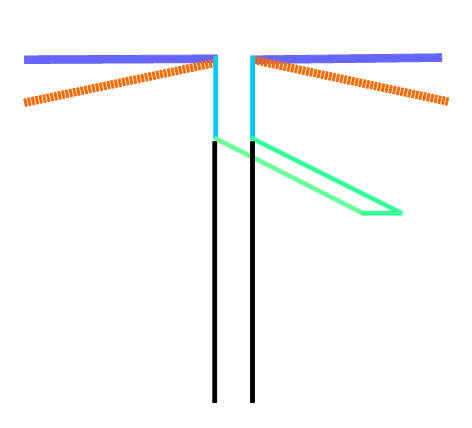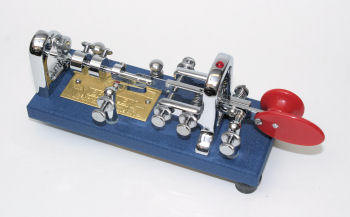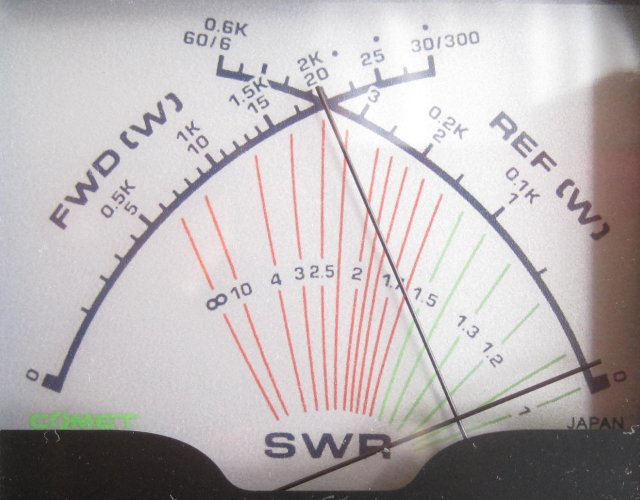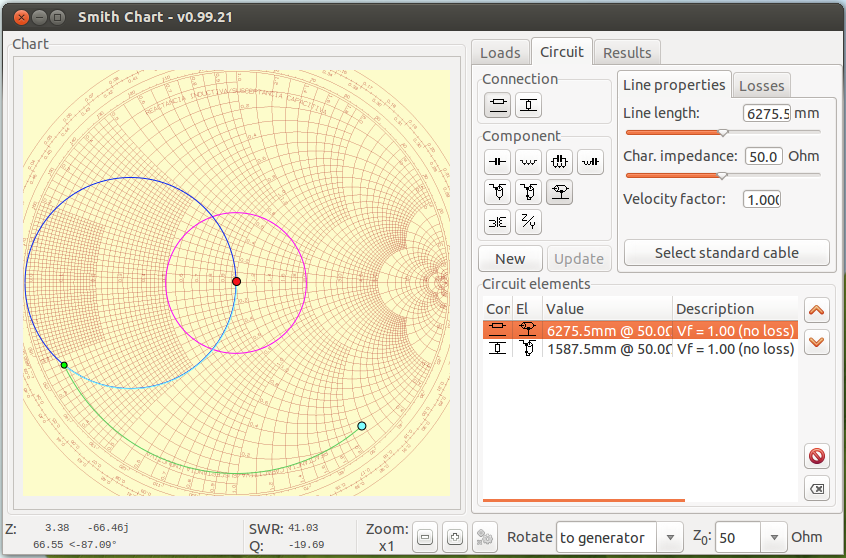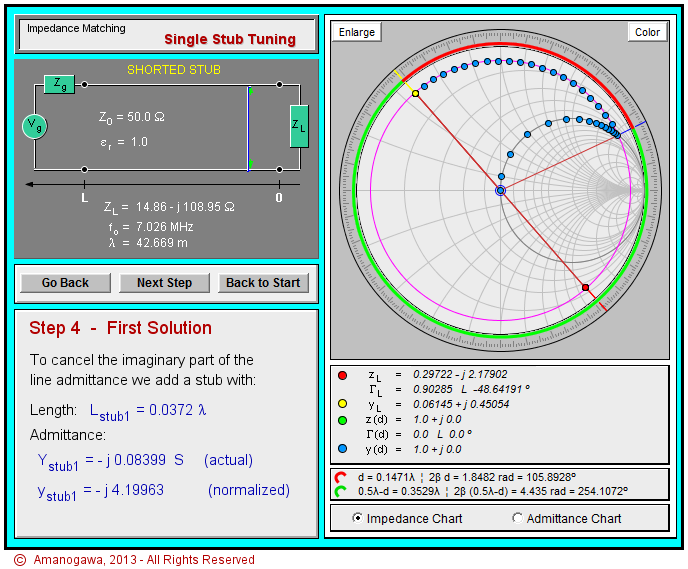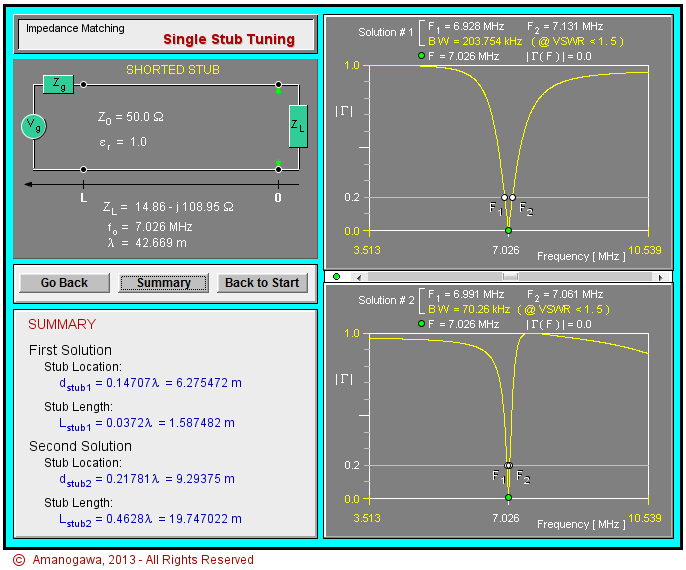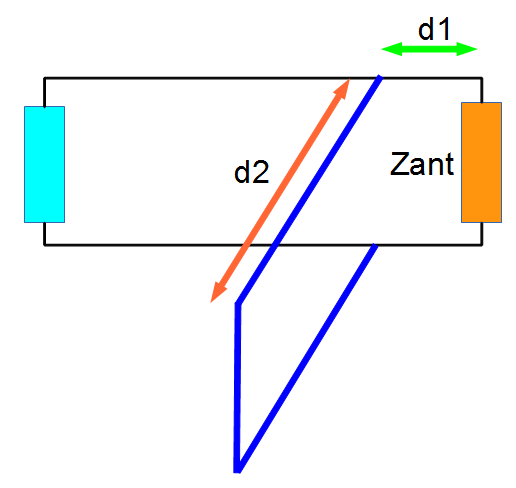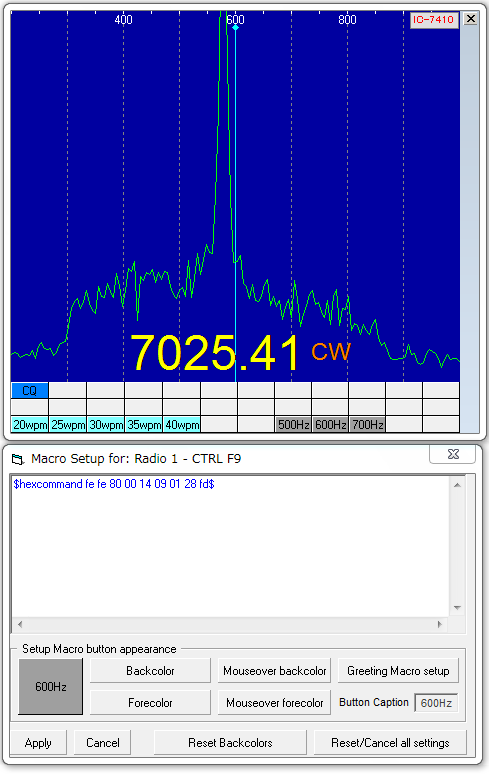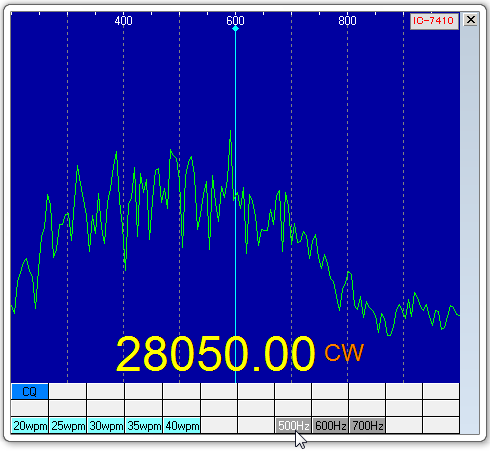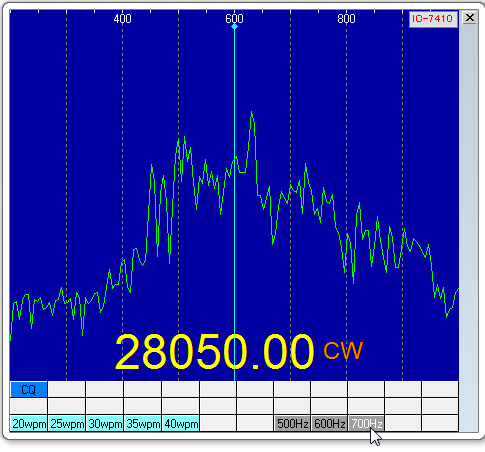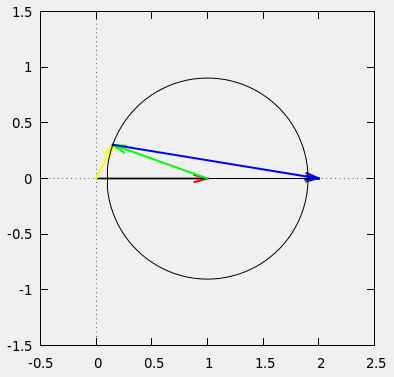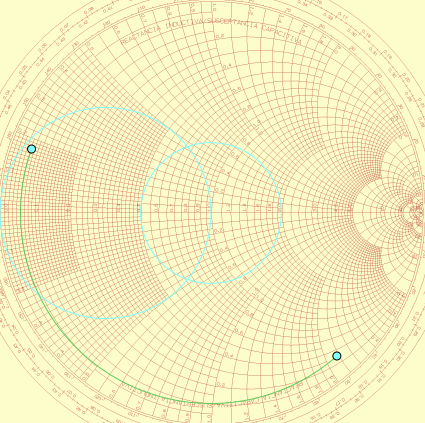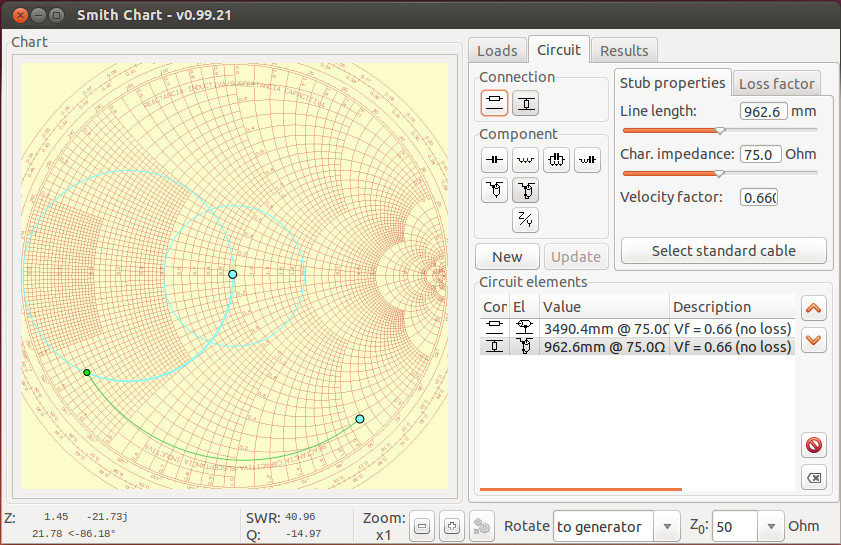I added an element (orange) to my old dipole for the 40m band with a stub match (all other colors except black) so that I can also QRV on the 20m band.
Preliminary SWR measurement results that appear on my rig tell me that now I can QRV both on the 40m and the 20m bands if I switch on the built-in ATU.
So far so good? O.K., but the configuration is obviously wrong, which you might have noticed already. The new element (orange) should be directly attached to the end of the coax cable (black).
Another questions is that although this configuration (without a stub match) is often used for multiband dipoles with the reasoning that the element(s) not in resonance will only give negligible contribution to the total impedance when attached in parallel to other element(s), because they usually show a very high impedance, is it also true in case there is a stub match employed?

